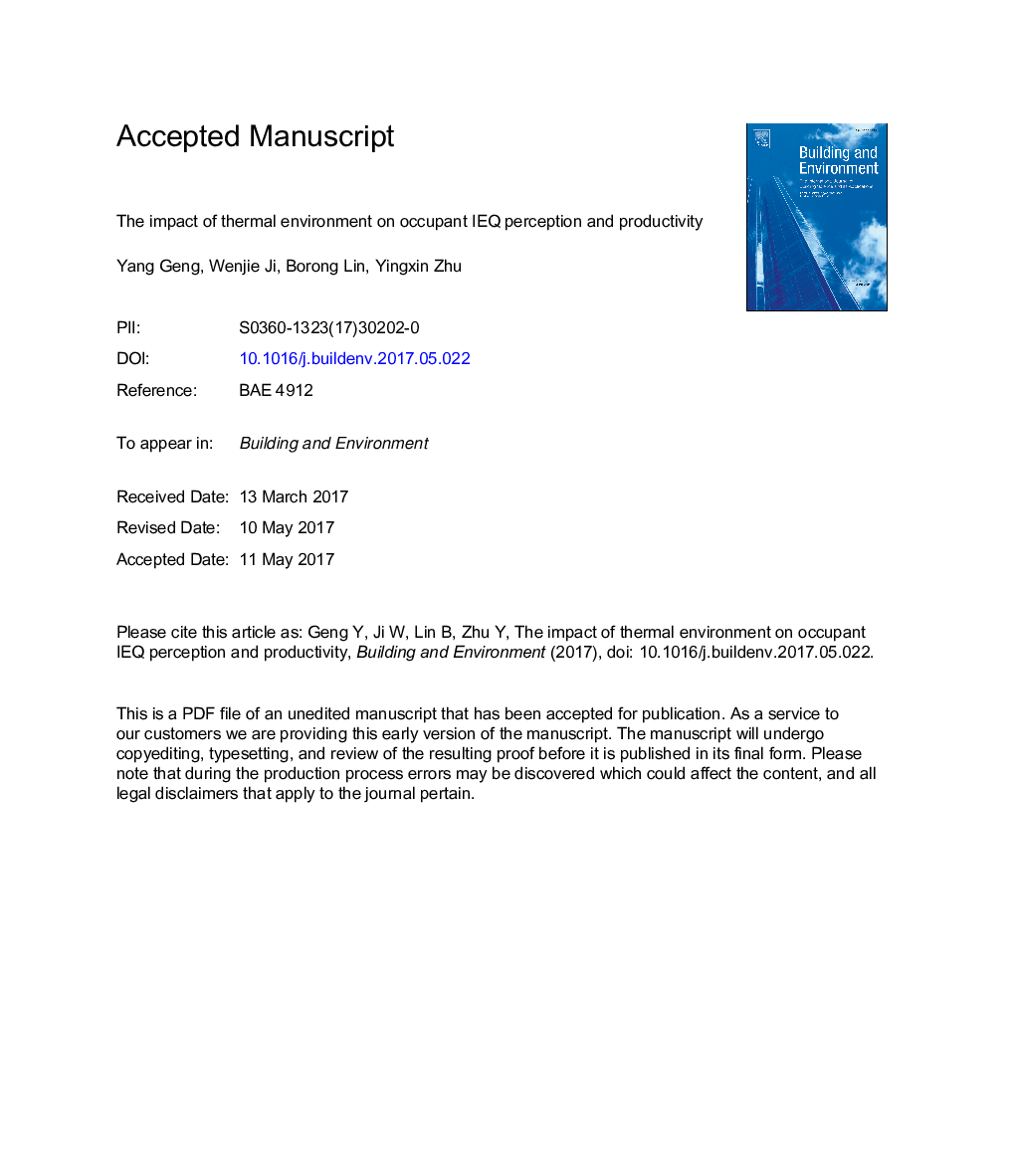| Article ID | Journal | Published Year | Pages | File Type |
|---|---|---|---|---|
| 4911510 | Building and Environment | 2017 | 24 Pages |
Abstract
In this paper, the effects of thermal environment on occupant IEQ perception and productivity were studied. Seven groups of experiments were carried out in a controlled office environment and the physical parameters, including air temperature, globe temperature, relative humidity, carbon dioxide concentration, illuminance and background noise level, were measured. In the experiments, indoor air temperature was the independent variable, which varied from 16 °C to 28 °C with a step of 2 °C, and other constant IEQ parameters were the control variables. The dependent variable would be human perception of various control variables and productivity. Subjects (9 females and 12 males) were recruited to participate every experiment for 2 h. During each experiment, they voted their perceptions of thermal comfort, indoor air quality, lighting and acoustic environment, and performed simulated office tasks to evaluate the productivity. The results showed that the variation of thermal environment not only affected thermal comfort but also had a “comparative” impact on the perception of other IEQ factors. When thermal environment was unsatisfactory, it weakened the “comfort expectation” of other IEQ factors, which accordingly resulted in the less dissatisfaction with other IEQ factors. Conversely, when thermal environment was quite satisfying, it raised “comfort expectation” of other IEQ factors, which lowered the evaluation of the real performance of other IEQ factors retroactively. The quantitative relationship between productivity and thermal environment was established. The optimal productivity was obtained when people felt “neutral” or “slightly cool”, and the increase of thermal satisfaction had a positive effect on productivity.
Related Topics
Physical Sciences and Engineering
Energy
Renewable Energy, Sustainability and the Environment
Authors
Yang Geng, Wenjie Ji, Borong Lin, Yingxin Zhu,
